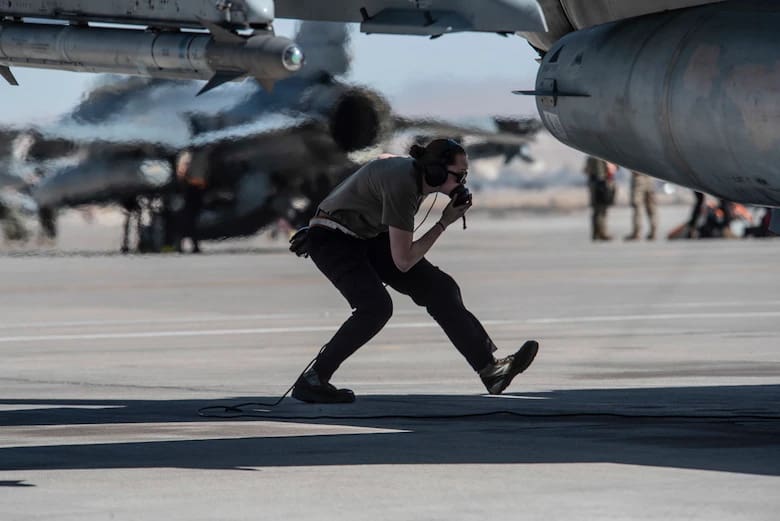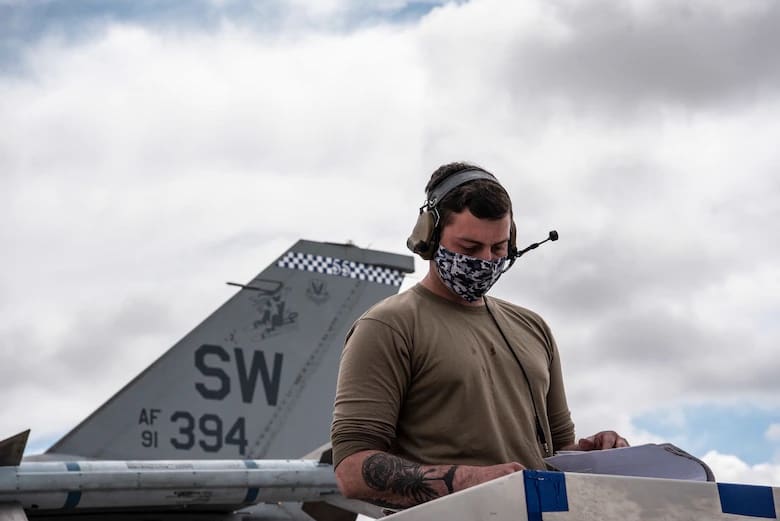Editor’s Comment: One day, the Air Force will acknowledge that it’s actually just a big logistics organization and put logisticians in charge. Like it or not, the aircrew are the service’s “delivery drivers” ensuring that the right thing gets to the right place at the right time. That’s just part of the equation. Making sure the means of delivery and the “thing” to be delivered are ready for that in time delivery takes a lot of work and aircrew aren’t involved at all.
Sorties are generated by maintenance. This realignment and renaming of MX happens every few years based in the whims of ever-changing Ops leadership. It’s all been tried before, over and over. It never really changes anything except causing turmoil for MX leaders. Wrenches still get turned and sorties generated.
JOINT BASE LANGLEY-EUSTIS, Va. (AFNS) —
Air Combat Command is changing the aircraft maintenance organizational structure to improve synchronization between maintenance and fighter squadrons.

This new structure, called Combat Oriented Maintenance Organization, or COMO, flattens the maintenance organizational structure and transitions aircraft maintenance units into fighter generation squadrons.
The fighter generation squadron is a new squadron comprised of maintainers responsible for airpower health and generation. The fighter generation squadron will be paired with a complementary fighter squadron and the two units will work collaboratively both in garrison and during deployments.

“We’ve already seen success with this new organizational model at Shaw Air Force Base (South Carolina),” said Maj. Gen. Mark Slocum, ACC director of air and space operations. “The benefit of this new organizational construct is it enhances the fighter force’s agility and better prepares them for a future dynamic force employment in a high-end fight.”
Pairing fighter squadrons with a dedicated fighter generation squadron will foster unity of effort between maintenance and operations as well as provide a better view of readiness.
For the last few years, ACC has been on a wing reorganization experimentation journey and allowed commanders to experiment with various types of wing organizational constructs in order to build more agile and cohesive units.

“After gathering what we’ve learned from this season of experimentation, we are now moving forward into a season of standardization,” said Maj. Gen. Tom Miller, ACC director of logistics, engineering and force protection. “The COMO structure allows fighter wings to prepare for rapid deployments and to disaggregate and reaggregate as needed by the CFACC.”
This pairing of the fighter and a fighter generation squadron is just the first phase of a broader force presentation model ACC is building to better organize, train and equip combat air forces. Phase two will focus on evaluation of air base squadrons that can rapidly deploy and provide base operating support. Phase three examines wing command and control capabilities.
The 20 FW at Shaw AFB and 388 FW at Hill AFB, Utah are the first wings to transition to the COMO model, with the remaining ACC fighter wings transitioning by the summer of 2022.
By Headquarters Air Combat Command
Photos by SSgt Destinee Sweeney


The idea presented in the article makes sense, but the editors comment is way off. Sorties generated does not equal the generation of airpower. Especially in a high end fight.
Try getting in a dogfight with a plane that is broken. If you don’t think that MX and the logistics tail that makes that sortie possible, is the foundation of US AirPower, you’re obviously a driver, and a very immature one at that.
This country hasn’t seen anything even remotely approaching a high end fight since the Balkans in the 90s and that was IADS-centric. Once again, IADS are eliminated by putting the right weapon at the right place at the right time. It’s a logistics exercise. Instead of dealing with road closures, planners are taking into account threats. Crews don’t jump in planes anymore and fly around until they run into the enemy. Missions are the planned and limitations are as much logistics factors as the enemy situation.
Not a driver. Not saying MX and logistics aren’t important. In fact, I agree with the foundation of airpower bit. But even the best logistics isn’t the same thing as strategy. MX and logistics should support a good strategy rather than driving it. Just my 3 cents.
Why do Flags get to monkey with organizations, make significant changes, spend money to “prove themselves” for promotion, on a whim cx building projects years into development (which will takes years if ever to restart), run around like royalty, then transfer the next year leaving chaos and lost opportunities in their wake?
How much money does this cost us?
While not perfect, USN/USMC: squadron maintenance, mid-level maintenance at the MAG/Wing level. In garrison, go to war, same people, same organization.
Major changes need to be at the DoD level. Discussed, vetted, input from other services. Is this change really worth it.
Stop the madness and massive loss in money and man hours.
Dude, we’re in the decline of empire. Of course military brass is going to busy itself with useless things. Efficacious bureaucracy is something that only states with the energy to persist can muster.
Those first two paragraphs speak volumes, I could not have said it better. As a retired USAF maintainer & a current A&P mechanic with a civilian Adversary Air company, I agree with the Editor’s Comments; all of these restructuring ideas are nothing new and create turmoil. I am for efficiency and change when it comes from the bottom up with a clear understanding of history and best practices being implemented. As long as there is a fighter/bomber pilot mafia running the USAF then they will be the ones calling the shots.
If you don’t think there is steady unity between maintenance, ops and drivers, maybe you were just looking at the wrong team. Just like when they reviewed RWP and found the scope and size of programs varied at each base, there is really no need to create new strategies to fill gap or build more comprehensive standards. At some point constant top to bottom change becomes the enemy.
I’ve seen both the Army Aviation and USAF units. Army Aviation mx is assigned to the Companies (ie Squadrons). My understanding is that the USMC and USN organize their formations in a similar manner.
However, the USAF has created another Maintenance Squadron and Group layer that is totally separate. I have personally observed for over a decade, the total disconnect between Ops and MX. Many times the commanders and Sr NCOs are going in opposite directions. It has never ever made any sense to me or to many people I know.
It is even worse than you think. In the AF the separate out Ordance a well. You have three groups with three different commanders and three different ideas for their own success trying to work together.